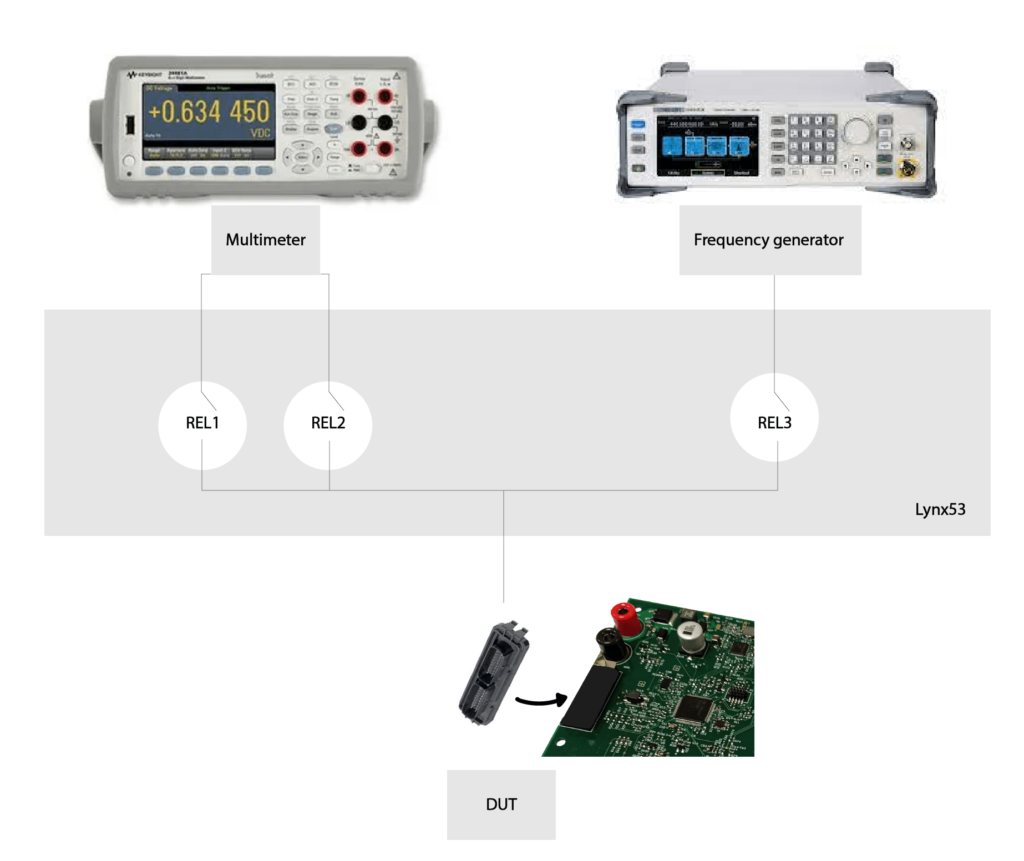
Illustration by Àngels Pinyol
Pinout short-circuit detection with combined functional EOL tester
Article by Albert Escala
Productivity correlates with quality: the cost of the outcome depends on how optimal the manufacturing process is. And a key factor is the price of the EOL assets. Among all those implemented for an EOL validation, such as ICT or AOI. Read here how to reduce the cost of the functional testers.
Product quality as a way to differentiate from other competitors.
Industrial companies put special effort on the validation of their manufactured products. Quality policies, especially for automotive Tier 1, define test procedures, test requirements and acceptance criteria for all device under test (DUT) before any delivery to their customer: the original equipment manufacturer (OEM).
However, quality is not free. The more detailed the test process is, the higher both fixed and variable costs are. Issues such as test coverage, test time, first pass yield (FPY), EOL tester acquisition cost and automation degree are a few examples of variables that affect overall company competitivity. Due to these, the test process represents a considerable cost to the manufactured product.
On the other hand, quality is not negotiable. It is not acceptable to delivery any part without having run the specified test process. Customer claims are an obstacle in the overall competition for excellence.
Functional EOL tester cost and performance are key factors on competitivity.
Certain markets have specific coverage requirements. Automotive electronics manufacturers are especially concerned about it. Each single function of the DUT must be tested to guarantee that it is error free once assembled in a vehicle. Due to high production volumes, testers become bottleneck. Therefore, in a long-term run, a reduced test time is preferred in opposition to purchasing cost. This can be seen in the graphic below, where high volumes justify the acquisition of faster functional EOL testers.

Certain test requirements make the EOL tester more complex. An example is the short-circuit detection at the connector pins. As this combines in-circuit features (ICT) with functional EOL, current relay matrix test boards are not specifically designed to meet this requirement. Therefore, test become more complex and expensive.
Lynx53 relay matrix test board. CAN controlled, 3 to 1 multiplexed connection.
The solution to overcome these issues is simple: base your EOL designs with the Lynx53. It features less cables, less connections, higher integration, higher switching speed because of solid state relays (SSR), lower overall cost and easy control. Each Lynx53 pin has the option to divert the connection to Backplane1, Backplane2 or to bypass from an external excitation device:

Hence, if Backplane lines are connected to a DMM, impedance between two or more pins can be monitored. Once short-circuits between pins are discarded, an excitation signal can be run thorough the third relay and Backplane1 can use the DMM to monitor that the excitation signal is correct.
Ready to be better than your competitors?
Lynx53 test board is used to combine ICT and functional test features at the EOL test. With the proper equipment design, both fixed and variables costs are reduced whilst quality requirements are not jeopardized.
Ask us for more information about this product that will reduce the complexity of your functional EOL tester. We can propose you a turn-key solution that will make your end-of-line not to be a concern anymore.
